Podcast: Play in new window | Download | Embed
Subscribe: RSS
Editorial Statement on the Criticism of Suboxone
Since 2017, the BC government has been massively expanding access to a prescription medication called Suboxone that provides far less euphoria than methadone or heroin. On episode 27 of Crackdown, we tell the story of Crackdown Editorial Board Reija Jean as she tries to become a “Suboxone person.” Can she kick dope with the help of a “cop baked in?”
Note: Beans the cat is healthy and happy. Don’t worry about Beans.
Interviewees
Policy Recommendations
Nothing about us without us – drug users should be given power over the design and implementation of the pharmaceutical policies that dominate their lives. We are the experts and we deserve a real seat at the table.
Drug users should have a real choice – not limited by the moral or political concerns of their physicians: Suboxone, Methadone, Dilaudid, prescription heroin, safe supply fentanyl, whatever.
End the war on euphoria.
Suggested Reading
Danya Fast, “Going Nowhere: Ambivalence about Drug Treatment during an Overdose Public Health Emergency in Vancouver,” Medical Anthropology Quarterly 35:2 (2021): 211.
David Moore. “Erasing pleasure from public discourse on illicit drugs: On the creation and reproduction of an absence,” International Journal of Drug Policy 19 (2008): 353–358.
Helena Hansen, Caroline Parker and Jules Netherland. “Race as a Ghost Variable in (White) Opioid Research,” Science Technology and Human Values 45:5 (2020): 848-876.
Nancy Campbell and Anne Lovell. “The history of the development of buprenorphine as an addiction therapeutic,” Annals of the New York Academy of Sciences 1248 (2012): 124-139.
Valerie Giang, Thulien M, McNeil R, Sedgemore K, Anderson H, Fast D. “Opioid agonist therapy trajectories among street entrenched youth in the context of a public health crisis.” SSM Popul Health. 11 (2020):100609.
Works Cited
Alan Cowan, Braude MC, Harris LS, May EL, Smith JP, Villarreal JE. “Evaluation in nonhuman primates: Evaluation of the physical dependence capacities of oripavine-thebaine partial agonists in patas monkeys,” in Narcotic Antagonists (1974): 427–438, Raven Press, New York.
British Columbia Centre on Substance Use and B.C. Ministry of Health. “A Guideline for the Clinical Management of Opioid Use Disorder,” (2017).
B.C. Coroners Service. “Illicit Drug Toxicity Report: Fentanyl-Detected Suspected Illicit Drug Toxicity Deaths, 2012-2021” (2021).
Danya Fast, “Going Nowhere: Ambivalence about Drug Treatment during an Overdose Public Health Emergency in Vancouver,” Medical Anthropology Quarterly 35:2 (2021): 211.
David Moore. “Erasing pleasure from public discourse on illicit drugs: On the creation and reproduction of an absence,” International Journal of Drug Policy 19 (2008): 353–358.
Helena Hansen, Caroline Parker and Jules Netherland. “Race as a Ghost Variable in (White) Opioid Research,” Science Technology and Human Values 45:5 (2020): 848-876.
John Lewis. “Nathan B Eddy Award Lecture: In Pursuit of the Holy Grail,” Proceedings of the 60th Annual Scientific Meeting of The College of Problems of Drug Dependence, Inc. (1998): 7-13.
Marteau D, McDonald R, Patel K. “The relative risk of fatal poisoning by methadone or buprenorphine within the wider population of England and Wales.” BMJ Open 5:5 (2015):e007629.
Megan Kurz, Jeong Eun Min, Laura Dale, Bohdan Nosyk. “Assessing the determinants of completing OAT induction and long term retention: A population-based study in British Columbia, Canada” Canadian Centre on Substance Use and Addiction Issues of Substance Conference (2021): F6.3.
Nancy Campbell and Anne Lovell. “The history of the development of buprenorphine as an addiction therapeutic,” Annals of the New York Academy of Sciences 1248 (2012): 124-139.
Valerie Giang, Thulien M, McNeil R, Sedgemore K, Anderson H, Fast D. “Opioid agonist therapy trajectories among street entrenched youth in the context of a public health crisis.” SSM Popul Health. 11 (2020):100609.
Credits
Crackdown is produced on the territories of the Musqueam, Squamish and Tsleil-Waututh Nations.
We make this podcast with funds from the Canadian Institutes of Health Research and the Social Sciences and Humanities Research Council of Canada. And from our Patreon supporters.
Our editorial board is: Samona Marsh, Shelda Kastor, Greg Fess, Jeff Louden, Dean Wilson, Laura Shaver, Reija Jean. Rest in Peace Dave Murray and Chereece Keewatin.
This episode was conceptualized, written, and produced by Sam Fenn, Alexander Kim, Alex de Boer, Danya Fast, Ryan McNeil, and Garth Mullins.
Original score was written and performed by Garth Mullins, James Ash, Sam Fenn, and Kai Paulson.
Donate to Crackdown on Patreon at patreon.com/crackdownpod. It helps a lot.

